Related Research Articles

William Cuthbert Faulkner was an American writer known for his novels and short stories set in the fictional Yoknapatawpha County, based on Lafayette County, Mississippi, where Faulkner spent most of his life. A Nobel laureate, Faulkner is one of the most celebrated writers of American literature and often is considered the greatest writer of Southern literature.
Trigger may refer to:

Temple Drake is a fictional character created by William Faulkner. She appears in the novels Sanctuary (1931) and Requiem for a Nun (1951). The 1962 play Requiem for a Nun and the films The Story of Temple Drake (1933) and Sanctuary (1961) also feature the character. In the two films she is played, respectively, by Miriam Hopkins and Lee Remick.
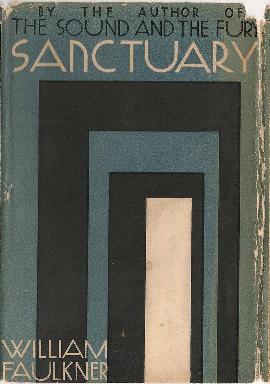
Sanctuary is a 1931 novel by American author William Faulkner about the rape and abduction of an upper-class Mississippi college girl, Temple Drake, during the Prohibition era. The novel was Faulkner's commercial and critical breakthrough and established his literary reputation, but was controversial given its themes. It is said Faulkner claimed it was a "potboiler", written purely for profit, but this has been debated by scholars and Faulkner's own friends.

Intruder in the Dust is a 1948 crime novel written by American author William Faulkner. Taking place in Mississippi, it revolves around an African-American farmer accused of murdering a Caucasian man.

Requiem for a Nun is a work of fiction written by William Faulkner. It is a sequel to Faulkner's early novel Sanctuary, which introduced the characters of Temple Drake, her friend Gowan Stevens, and Gowan's uncle Gavin Stevens. The events in Requiem are set in Faulkner's fictional Yoknapatawpha County and Jackson, Mississippi, in November 1937 and March 1938, eight years after the events of Sanctuary. In Requiem, Temple, now married with a child, must learn to deal with her violent, turbulent past as related in Sanctuary.
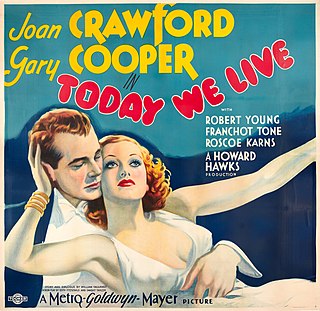
Today We Live is a 1933 American pre-Code romance drama film produced and directed by Howard Hawks and starring Joan Crawford, Gary Cooper, Robert Young and Franchot Tone.

The Story of Temple Drake is a 1933 American pre-Code drama film directed by Stephen Roberts and starring Miriam Hopkins and Jack La Rue. It tells the story of Temple Drake, a reckless woman in the American South who falls into the hands of a brutal gangster and rapist. It was adapted from the highly controversial 1931 novel Sanctuary by William Faulkner. Though some of the more salacious elements of the source novel were not included, the film was still considered so indecent that it helped give rise to the strict enforcement of the Hays Code.

The Grissom Gang is a 1971 American crime neo noir directed and produced by Robert Aldrich from a screenplay by Leon Griffiths. The film is the second adaptation of the 1939 novel No Orchids for Miss Blandish by James Hadley Chase; a previous version had been made in Britain in 1948. The cast includes Kim Darby, Scott Wilson, Tony Musante, Robert Lansing, Irene Dailey, Connie Stevens, Wesley Addy, Joey Faye and Ralph Waite.

No Orchids for Miss Blandish is a 1948 British gangster film adapted and directed by St. John Legh Clowes from the 1939 novel of the same name by James Hadley Chase. It stars Jack La Rue, Hugh McDermott, and Linden Travers, with unbilled early appearances from Sid James, as a barman, and Walter Gotell, as a nightclub doorman. Due to the film's strong violence and sexual content for its time, amongst other reasons, several critics have called it one of the worst films ever made.

Jerry Ziesmer was an American assistant director, production manager and occasional actor. He is best known for his role as Jerry in the 1979 film Apocalypse Now in which he delivers the infamous line "terminate with extreme prejudice". His character is suspected to be a part of CORDS or DOD Command Staff.
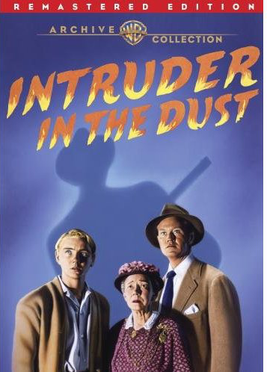
Intruder in the Dust is a 1949 crime drama film produced and directed by Clarence Brown and starring David Brian, Claude Jarman Jr. and Juano Hernandez. The film is based on the 1948 novel Intruder in the Dust by William Faulkner, and was filmed in Faulkner's hometown of Oxford, Mississippi.
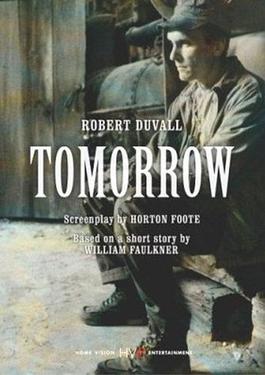
Tomorrow is a 1972 American drama film directed by Joseph Anthony and starring Robert Duvall. The screenplay was written by Horton Foote, adapted from a play he wrote for Playhouse 90 that was itself based on a 1940 short story by William Faulkner in the short story collection Knight's Gambit. The PG-rated film was filmed in the Mississippi counties of Alcorn and Itawamba. Although released in 1972, it saw limited runs in the U.S. until re-released about ten years later. Duvall has called the film one of his personal favorites.
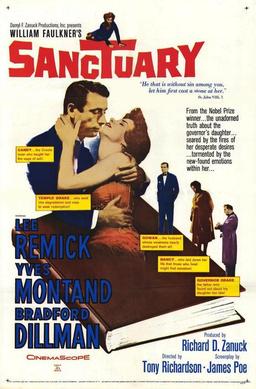
Sanctuary is a 1961 drama film directed by Tony Richardson. The film, based on the William Faulkner novels Sanctuary (1931) and Requiem for a Nun (1951), is about the black maid of a white woman who kills the latter's newborn in order to give her employer a way out of a predicament, and then faces the death penalty.
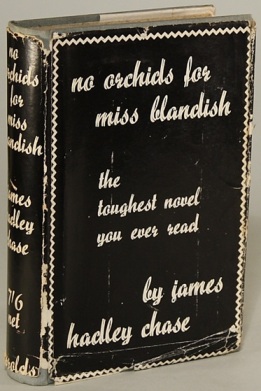
No Orchids for Miss Blandish is a 1939 crime novel by the British writer James Hadley Chase. It was a critical and commercial success upon release, though it also provoked considerable controversy due to its explicit depiction of sexuality and violence. In 1942, the novel was adapted into a stage play and in 1948 it became a British film. The novel became particularly popular with British servicemen during World War II.

William Faulkner (1897—1962) was an American writer who won the 1949 Nobel Prize in Literature. He is best known for his novels and short stories set in the fictional Yoknapatawpha County, a stand-in for his hometown of Oxford in Lafayette County, Mississippi.
Gene D. Phillips, S.J. was an American author, educator, and Catholic priest.
Gavin Stevens is a lawyer and the county attorney in Jefferson in Faulkner's fictional Yoknapatawpha County, Mississippi. He was educated at Harvard and Heidelberg universities.
Requiem for a Nun is a play by Albert Camus, adapted from William Faulkner's 1951 novel of the same name. The play was published in 1962.
Fiction, Film, and Faulkner: The Art of Adaptation is a 1988 non-fiction book by Gene D. Phillips, published by University of Tennessee Press. It is about William Faulkner, his works, and film adaptations of his works.
References
- Adamowski, T. H. (Spring 1977). "Faulkner's Popeye: The "Other" As Self". Canadian Review of American Studies . 8 (1). University of Toronto Press: 36–51. doi:10.3138/CRAS-008-01-04. S2CID 159783563. - Published online by University of Toronto Press on March 10, 2011. Also available at Project MUSE
- This was reprinted in: Bleikasten, André and Nicole Moulinoux (editors). Douze lectures de Sanctuaire. PU de Rennes/Fondation William Faulkner (Rennes, France), 1995. p. 51-66.
Notes
- 1 2 Phillips, Gene D. (Summer 1973). "Faulkner And The Film: The Two Versions Of "Sanctuary"". Literature/Film Quarterly . 1 (2). Salisbury University: 263–273. JSTOR 43795435. - Cited: p. 269.
- ↑ Fowler, Doreen. "Reading for the "Other Side": Beloved and Requiem for a Nun." In: Kolmerton, Carol A., Stephen M. Ross, and Judith Bryant Wittenberg (editors). Unflinching Gaze: Faulkner and Morrison Re-Imagined. University Press of Mississippi, 1997. ISBN 1617035297, 9781617035296. Start: p. 139. CITED: p. 142.
- ↑ Degenfelder, E. Pauline (Winter 1976). "The Four Faces of Temple Drake: Faulkner's Sanctuary, Requiem for a Nun, and the Two Film Adaptations". American Quarterly . 28 (5): 544–560. doi:10.2307/2712288. JSTOR 2712288. - Cited: p. 554.
- ↑ "Sanctuary" (JPG). (from here)
- ↑ Phillips, Gene D. (Summer 1973). "Faulkner And The Film: The Two Versions Of "Sanctuary"". Literature/Film Quarterly . 1 (2). Salisbury University: 263–273. JSTOR 43795435. - Cited: p. 271.
- ↑ Phillips, Gene D. Fiction, Film, and Faulkner: The Art of Adaptation . University of Tennessee Press, 2001. ISBN 1572331666, 9781572331662. p. 81.
- ↑ Phillips, Gene D. Fiction, Film, and Faulkner: The Art of Adaptation. University of Tennessee Press, 2001. ISBN 1572331666, 9781572331662. p. 80.
- ↑ Phillips, Gene D. Fiction, Film, and Faulkner: The Art of Adaptation. University of Tennessee Press, 2001. ISBN 1572331666, 9781572331662. p. 82-83.
- ↑ Adamowski, page unknown.
- ↑ Cohen, Philip G., David Krause, and Karl F. Zender. "William Faulkner." In: Sixteen Modern American Authors Volume 2. Duke University Press, 1990. Start: p. 210. CITED: p. 276-275.
- ↑ Phillips, Gene D. (Summer 1973). "Faulkner And The Film: The Two Versions Of "Sanctuary"". Literature/Film Quarterly . 1 (2). Salisbury University: 263–273. JSTOR 43795435. - Cited: p. 273.